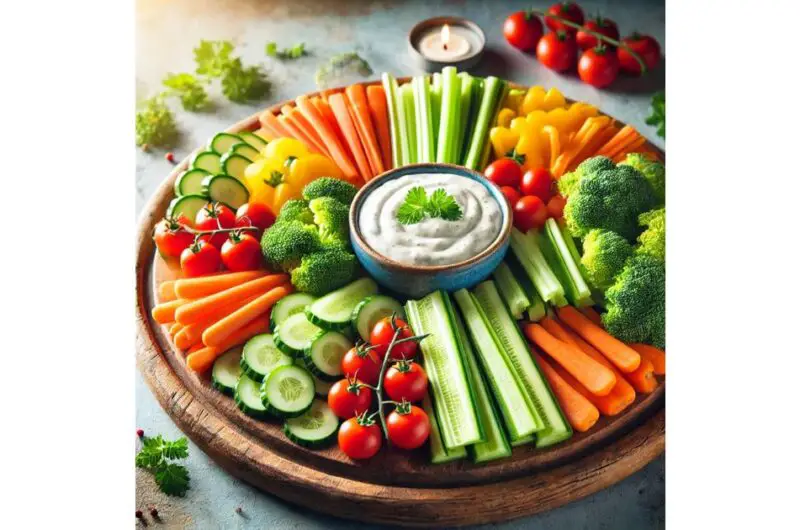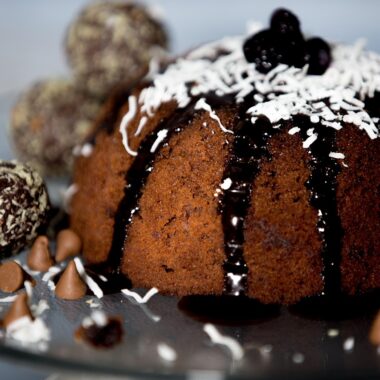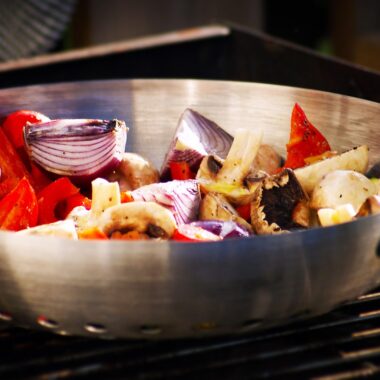Veggie trays are a staple at gatherings, offering a vibrant, healthy, and versatile option that appeals to a wide range of tastes. Whether you’re Hosting a party, preparing a family snack, or contributing to a potluck, a well-crafted veggie tray can be both a visual centerpiece and a delicious treat. In this article, we’ll explore creative veggie tray ideas, from classic combinations to themed designs, seasonal inspirations, and tips for presentation, pairing with dips, and accommodating dietary needs. Let’s dive into the world of veggie trays and discover how to elevate this simple dish into something extraordinary.
Why Veggie Trays Matter
Vegetable trays are more than just a convenient snack—they’re a celebration of freshness and nutrition. Packed with vitamins, minerals, and fiber, they provide a guilt-free option that balances out heavier party fare like chips or desserts. Plus, their bright colors and varied textures make them inherently inviting. A thoughtfully arranged veggie tray can cater to vegans, vegetarians, gluten-free diets, and even picky eaters, making it a universal crowd-pleaser.
The beauty of a veggie tray lies in its flexibility. You can keep it simple with a handful of crudités and a dip, or go all out with artistic arrangements and unique flavor profiles. No matter the occasion—be it a casual game night, a holiday feast, or a summer picnic—there’s a veggie tray idea to suit your needs.
The Basics: Building a Classic Veggie Tray
Before we get into creative twists, let’s cover the essentials of a classic veggie tray. A standard tray typically includes a variety of raw vegetables and a central dip. Here’s a starting point:
- Vegetables: Carrots, celery, bell peppers (red, yellow, green), cucumber, cherry tomatoes, broccoli, and cauliflower.
- Dip: Ranch dressing, hummus, or a creamy spinach dip.
Tips for Success:
- Cut for Convenience: Slice veggies into bite-sized pieces or sticks for easy grabbing. Baby carrots and cherry tomatoes are naturally perfect as is.
- Color Balance: Aim for a rainbow effect—orange carrots, green celery, red tomatoes—to make the tray visually appealing.
- Freshness: Wash and dry vegetables thoroughly, and store them in the fridge until serving to maintain crispness.
This basic setup works well for any occasion, but let’s take it up a notch with some inventive ideas.
Creative Veggie Tray Themes
Themed veggie trays add a fun element to your presentation. Here are a few ideas to inspire you:
- Garden Party Tray
- Veggies: Sugar snap peas, radishes, asparagus spears, baby zucchini, and grape tomatoes.
- Dip: Herbed cream cheese or a light vinaigrette.
- Presentation: Arrange the veggies to resemble a garden—snap peas as vines, radishes as flowers, and asparagus as stalks. Use a rectangular tray and add edible flowers like nasturtiums for extra flair.
- Rainbow Tray
- Veggies: Red bell peppers, orange carrots, yellow squash, green beans, blueberries (for purple), and cauliflower (for white).
- Dip: Yogurt-based dip with honey and dill.
- Presentation: Line up the veggies in rows or a circular pattern to mimic a rainbow. Place the dip in a cloud-shaped bowl at one end.
- Holiday-Themed Trays
- Christmas Tree: Use broccoli florets to form a tree shape, cherry tomatoes as ornaments, a yellow bell pepper star on top, and a celery trunk. Serve with a green goddess dip.
- Pumpkin Patch (Fall): Arrange orange veggies (carrots, orange peppers) like pumpkins, with green beans or celery as vines. Pair with a spiced pumpkin hummus.
- Kid-Friendly Shapes
- Veggies: Cucumber rounds, carrot sticks, cherry tomatoes, and bell pepper strips.
- Dip: Ranch or peanut butter (for dipping carrots).
- Presentation: Use cookie cutters to shape veggies into stars, hearts, or animals. Arrange them into a smiling face or a simple scene like a house.
Seasonal Veggie Tray Inspirations
Tailoring your veggie tray to the seasons keeps it fresh and relevant. Here’s how to adapt based on the time of year:
- Spring: Highlight tender, young veggies like baby carrots, pea pods, radishes, and asparagus. Pair with a light lemon-dill dip to echo the season’s brightness.
- Summer: Go for juicy, refreshing options—cucumbers, cherry tomatoes, zucchini sticks, and sweet bell peppers. A cool tzatziki or salsa fresca complements the heat.
- Fall: Embrace hearty, earthy flavors with roasted beets (cooled), parsnip sticks, butternut squash cubes, and kale chips. Serve with a warm artichoke dip or spiced hummus.
- Winter: Opt for sturdy veggies like cauliflower, broccoli, turnip sticks, and red cabbage slices. A rich, cheesy dip or a roasted garlic spread adds warmth.
Pairing Veggies with Dips
The dip can make or break a veggie tray. While ranch is a classic, experimenting with flavors can elevate the experience. Here are some pairings to try:
- Hummus: A Middle Eastern staple that works with almost everything—carrots, peppers, cucumbers, and even broccoli. Try roasted red pepper or garlic variations for extra depth.
- Guacamole: Perfect for summer trays with tomatoes, peppers, and jicama sticks. Add a sprinkle of chili powder for a kick.
- Blue Cheese Dip: Bold and tangy, this pairs beautifully with celery, carrots, and cauliflower.
- Sriracha Yogurt: For spice lovers, mix Greek yogurt with sriracha and a touch of lime. Great with crunchy snap peas and radishes.
- Pesto Cream: Blend pesto with sour cream for a herbaceous dip that shines with zucchini and cherry tomatoes.
Pro Tip: Offer two dips—one creamy, one lighter—to cater to different preferences.
Presentation Tips: Making Your Tray Pop
A veggie tray isn’t just about taste—it’s a feast for the eyes. Here’s how to make it stunning:
- Choose the Right Platter: Round trays work for circular arrangements, while rectangular ones suit rows or scenes. Tiered stands add height and drama.
- Layer and Texture: Place taller veggies (celery, asparagus) in the back and shorter ones (tomatoes, baby carrots) in front. Mix crunchy and soft textures for variety.
- Garnish: Sprinkle fresh herbs like parsley, dill, or chives over the tray for a finishing touch. Edible flowers or citrus slices add elegance.
- Contain the Dip: Use small bowls, hollowed-out bell peppers, or cabbage heads to hold dips. Place them strategically to anchor the design.
Accommodating Dietary Needs
A veggie tray is naturally accommodating, but a few tweaks can ensure everyone enjoys it:
- Gluten-Free: Most raw veggies are gluten-free, but double-check dips. Skip store-bought ranch with hidden gluten and make your own with gluten-free ingredients.
- Vegan: Use plant-based dips like hummus, guacamole, or cashew cheese instead of dairy-based options.
- Low-Carb/Keto: Focus on low-carb veggies (broccoli, cauliflower, peppers) and pair with a high-fat dip like ranch or blue cheese.
- Allergies: Avoid common allergens like peanuts in dips if unsure about guests’ needs. Label trays if multiple dips are served.
Unique Veggie Tray Additions
To stand out, consider less common veggies or preparation methods:
- Jicama: A crisp, mildly sweet root veggie that’s a refreshing change from carrots.
- Kohlrabi: Peel and slice into sticks for a peppery crunch.
- Romanesco: Its fractal shape adds visual intrigue alongside cauliflower and broccoli.
- Blanched Veggies: Lightly blanch green beans or asparagus for a softer texture while keeping them vibrant.
- Pickled Options: Add pickled radishes or carrots for a tangy twist.
Veggie Tray Hacks for Busy Hosts
Short on time? These shortcuts keep your tray impressive:
- Pre-Cut Veggies: Buy pre-washed, pre-cut veggies from the store. Arrange them thoughtfully to hide the “cheat.”
- Dip Mixes: Use seasoning packets with sour cream or yogurt for quick, flavorful dips.
- Freezer Boost: Frozen edamame or peas can be thawed and added for variety—no prep needed.
Serving and Storing Your Veggie Tray
- Timing: Assemble no more than 2-3 hours before serving to keep veggies crisp. Cover with a damp paper towel and plastic wrap, then refrigerate.
- Serving: Set the tray out with small tongs or forks for hygiene. Keep it chilled with an ice pack underneath for outdoor events.
- Leftovers: Store veggies in airtight containers with a damp paper towel to retain moisture. Use within 2-3 days.
Conclusion: The Art of the Veggie Tray
A veggie tray is a canvas for creativity, nutrition, and hospitality. From simple sticks-and-dip to elaborate themed designs, the possibilities are endless. By playing with colors, shapes, flavors, and seasonal ingredients, you can craft a tray that’s as delightful to look at as it is to eat. Whether you’re a minimalist or an artist at heart, these veggie tray ideas offer something for every occasion and every guest. So grab your favorite veggies, whip up a dip, and let your imagination run wild—your next gathering deserves a veggie tray that steals the show.


















